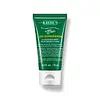What's inside
What's inside
 Key Ingredients
Key Ingredients

 Benefits
Benefits

 Concerns
Concerns

 Ingredients Side-by-side
Ingredients Side-by-side

Water
Skin ConditioningGlycerin
HumectantAlcohol Denat.
AntimicrobialDimethicone
EmollientAmmonium Polyacryloyldimethyl Taurate
Emulsion StabilisingPEG/PPG/Polybutylene Glycol-8/5/3 Glycerin
HumectantTriethanolamine
BufferingPhenoxyethanol
PreservativeSilica
AbrasiveCapryloyl Glycine
CleansingCetyl Dimethicone
EmollientMel
EmollientCarbomer
Emulsion StabilisingCaprylyl Glycol
EmollientBis-PEG-18 Methyl Ether Dimethyl Silane
EmollientSilica Silylate
EmollientDimethicone/PEG-10/15 Crosspolymer
Cetearyl Alcohol
EmollientSalicylic Acid
MaskingAcrylates Copolymer
Totarol
AntioxidantParfum
MaskingGlyceryl Acrylate/Acrylic Acid Copolymer
HumectantCetearyl Glucoside
EmulsifyingHexyl Cinnamal
PerfumingLinalool
PerfumingLimonene
PerfumingBenzyl Alcohol
PerfumingAmyl Cinnamal
PerfumingWater, Glycerin, Alcohol Denat., Dimethicone, Ammonium Polyacryloyldimethyl Taurate, PEG/PPG/Polybutylene Glycol-8/5/3 Glycerin, Triethanolamine, Phenoxyethanol, Silica, Capryloyl Glycine, Cetyl Dimethicone, Mel, Carbomer, Caprylyl Glycol, Bis-PEG-18 Methyl Ether Dimethyl Silane, Silica Silylate, Dimethicone/PEG-10/15 Crosspolymer, Cetearyl Alcohol, Salicylic Acid, Acrylates Copolymer, Totarol, Parfum, Glyceryl Acrylate/Acrylic Acid Copolymer, Cetearyl Glucoside, Hexyl Cinnamal, Linalool, Limonene, Benzyl Alcohol, Amyl Cinnamal
Water
Skin ConditioningParaffinum Liquidum
EmollientGlycerin
HumectantPetrolatum
EmollientStearic Acid
CleansingGlyceryl Stearate
EmollientSesamum Indicum Seed Oil
EmollientUrea
BufferingLanolin Alcohol
EmollientTriethanolamine
BufferingHordeum Vulgare Extract
EmollientCucumis Sativus Fruit Extract
EmollientHelianthus Annuus Seedcake
AbrasivePropylene Glycol Dicaprate
EmollientSodium Hyaluronate
HumectantButylene Glycol
HumectantPentylene Glycol
Skin ConditioningTrisodium EDTA
Phenoxyethanol
PreservativeCI 15985
Cosmetic ColorantCI 19140
Cosmetic ColorantCI 17200
Cosmetic ColorantWater, Paraffinum Liquidum, Glycerin, Petrolatum, Stearic Acid, Glyceryl Stearate, Sesamum Indicum Seed Oil, Urea, Lanolin Alcohol, Triethanolamine, Hordeum Vulgare Extract, Cucumis Sativus Fruit Extract, Helianthus Annuus Seedcake, Propylene Glycol Dicaprate, Sodium Hyaluronate, Butylene Glycol, Pentylene Glycol, Trisodium EDTA, Phenoxyethanol, CI 15985, CI 19140, CI 17200
 Reviews
Reviews

Ingredients Explained
These ingredients are found in both products.
Ingredients higher up in an ingredient list are typically present in a larger amount.
Glycerin is already naturally found in your skin. It helps moisturize and protect your skin.
A study from 2016 found glycerin to be more effective as a humectant than AHAs and hyaluronic acid.
As a humectant, it helps the skin stay hydrated by pulling moisture to your skin. The low molecular weight of glycerin allows it to pull moisture into the deeper layers of your skin.
Hydrated skin improves your skin barrier; Your skin barrier helps protect against irritants and bacteria.
Glycerin has also been found to have antimicrobial and antiviral properties. Due to these properties, glycerin is often used in wound and burn treatments.
In cosmetics, glycerin is usually derived from plants such as soybean or palm. However, it can also be sourced from animals, such as tallow or animal fat.
This ingredient is organic, colorless, odorless, and non-toxic.
Glycerin is the name for this ingredient in American English. British English uses Glycerol/Glycerine.
Learn more about GlycerinPhenoxyethanol is a preservative that has germicide, antimicrobial, and aromatic properties. Studies show that phenoxyethanol can prevent microbial growth. By itself, it has a scent that is similar to that of a rose.
It's often used in formulations along with Caprylyl Glycol to preserve the shelf life of products.
Triethanolamine is an emulsifier and pH adjuster. It is created using ethylene oxide and ammonia. This gives Triethanolamine a nitrogen core and a similar scent to ammonia.
As an emulsifier, it prevents ingredients from separating and enhances texture by adding volume to a product.
PH adjusters are common in cosmetic products. The pH of a product can affect the effectiveness of other ingredients. A product with a high pH may also irritate the skin.
Learn more about TriethanolamineWater. It's the most common cosmetic ingredient of all. You'll usually see it at the top of ingredient lists, meaning that it makes up the largest part of the product.
So why is it so popular? Water most often acts as a solvent - this means that it helps dissolve other ingredients into the formulation.
You'll also recognize water as that liquid we all need to stay alive. If you see this, drink a glass of water. Stay hydrated!
Learn more about Water